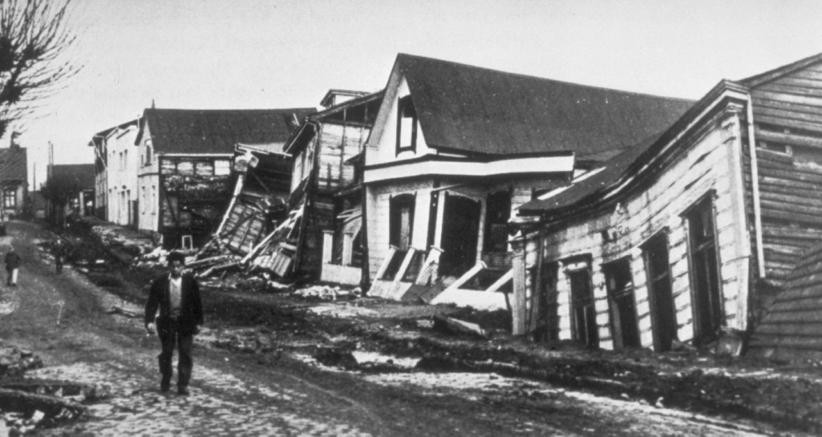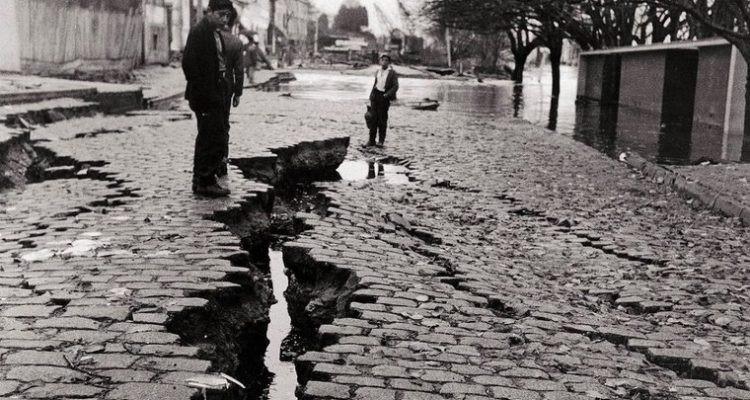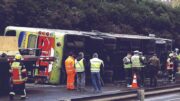Marcelo Montecinos/The Santiago Times Staff
The earth moved like never before for eight minutes. At 15:11 on the 22 of May of 1960, a gigantic earthquake shook the south of Chile, causing panic in its population. Seismographs around the world registered an unprecedented magnitude of more than 9.0. The mega earthquake and ensuing tsunami was to become known as the Earthquake of Valdivia of 1960, which forcefully hit more than 40 cities in the central-south areas of Chile, forever changing the morphology of the Chilean coast and seismic science around the world.
The catastrophic event unleashed 25 times more energy than the 2010 earthquake known as “27F”.
Gabriel González, a CIGIDEN (Research Center for integrated Disaster Risk Management) vice-director, noted that this earthquake was followed by a seismic sequence that began the morning of May 21 with an earthquake of 8.3 magnitude, with its epicenter in Lota. Eight earthquakes hit beforehand, ranging from 5.8 to 7.8 magnitude, affecting 109 areas in the central-southern coastal cities.
Marcos Moreno, a CIGIDEN researcher said: “It’s a type of earthquake that needs a long time, many centuries, to accumulate the necessary force to generate such a large event. The 1960 earthquake was preceded by a strong earthquake the previous day, and the plates slipped more than 40 meters in some areas, changing the level of the earth’s surface almost instantaneously, especially in the coast…”
Historical studies led by Marco Cisternas of the U. Católica de Valparaíso, suggests this type earthquake happen every 300 years.

Pierre St. Amand
An enormous tsunami
Within a half hour after the earthquake, a huge tsunami hit the coasts of Chile, from Concepción to Chiloé. The waves in Corral were as high as 10 meters. Waves of the tsunami, as high as 6.3 meters, hit the coasts of Japan, killing 139 people. The waves also reached the Philippines, Indonesia, San Francisco and Hawaii, notes Rodrigo Cienfuegos, a director of CIGIDEN. The Tsunamis Warning Center was set up internationally after the event.
Memories the ‘60
“In those times there was no GPS, satellites, computer models or survey protocols that today allow for a detailed radiography of tsunamis…” explains Winckler, also a researcher at CIGIDEN.
Two days after the earthquake, the Puyehue volcano began an eruptive cycle that would last 7 days.
The earthquake left 2000 victims in Chile.


